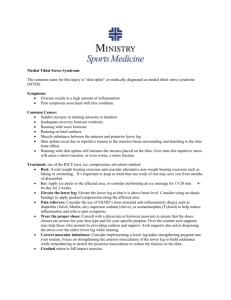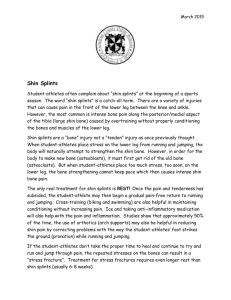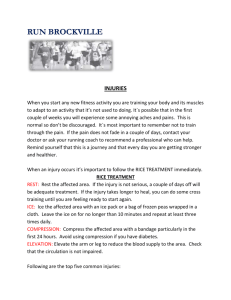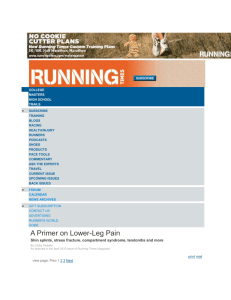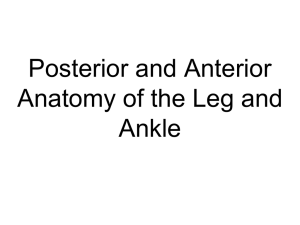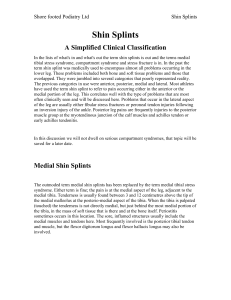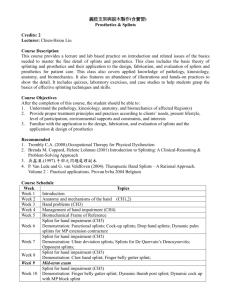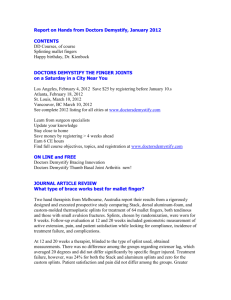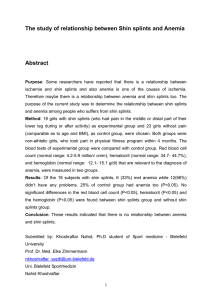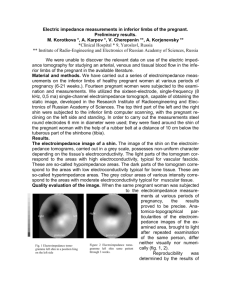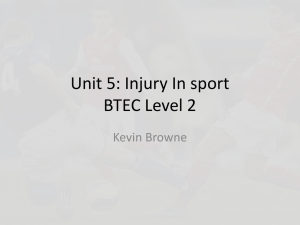Shin Splints (Tibial Stress Syndrome)
advertisement
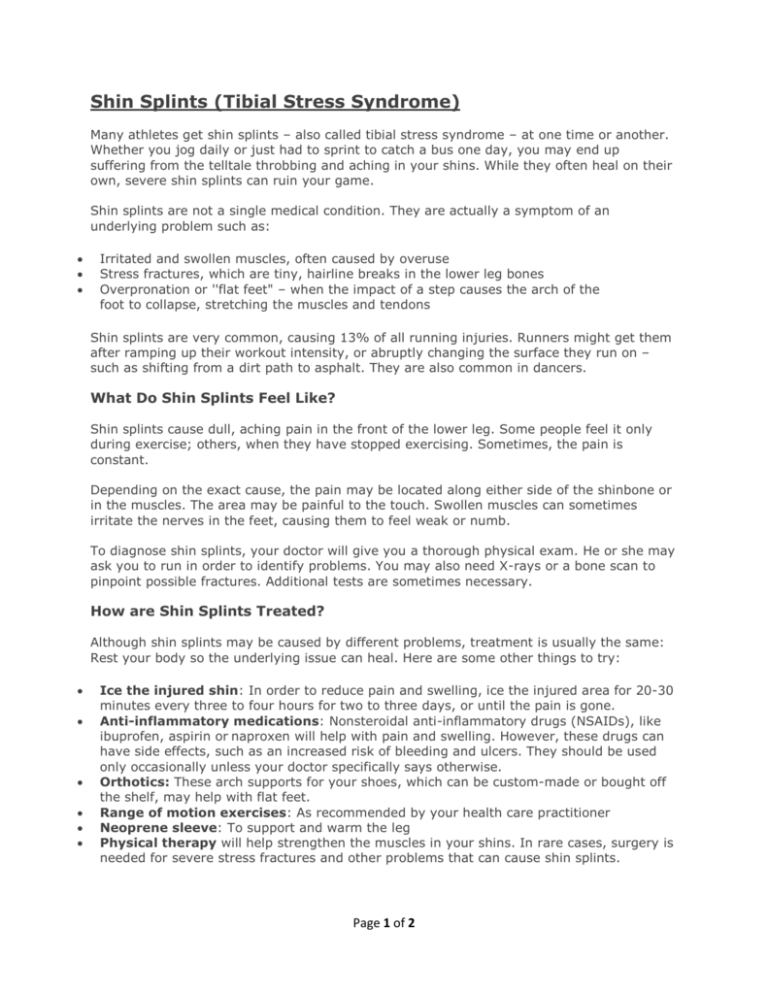
Shin Splints (Tibial Stress Syndrome) Many athletes get shin splints – also called tibial stress syndrome – at one time or another. Whether you jog daily or just had to sprint to catch a bus one day, you may end up suffering from the telltale throbbing and aching in your shins. While they often heal on their own, severe shin splints can ruin your game. Shin splints are not a single medical condition. They are actually a symptom of an underlying problem such as: Irritated and swollen muscles, often caused by overuse Stress fractures, which are tiny, hairline breaks in the lower leg bones Overpronation or ''flat feet" – when the impact of a step causes the arch of the foot to collapse, stretching the muscles and tendons Shin splints are very common, causing 13% of all running injuries. Runners might get them after ramping up their workout intensity, or abruptly changing the surface they run on – such as shifting from a dirt path to asphalt. They are also common in dancers. What Do Shin Splints Feel Like? Shin splints cause dull, aching pain in the front of the lower leg. Some people feel it only during exercise; others, when they have stopped exercising. Sometimes, the pain is constant. Depending on the exact cause, the pain may be located along either side of the shinbone or in the muscles. The area may be painful to the touch. Swollen muscles can sometimes irritate the nerves in the feet, causing them to feel weak or numb. To diagnose shin splints, your doctor will give you a thorough physical exam. He or she may ask you to run in order to identify problems. You may also need X-rays or a bone scan to pinpoint possible fractures. Additional tests are sometimes necessary. How are Shin Splints Treated? Although shin splints may be caused by different problems, treatment is usually the same: Rest your body so the underlying issue can heal. Here are some other things to try: Ice the injured shin: In order to reduce pain and swelling, ice the injured area for 20-30 minutes every three to four hours for two to three days, or until the pain is gone. Anti-inflammatory medications: Nonsteroidal anti-inflammatory drugs (NSAIDs), like ibuprofen, aspirin or naproxen will help with pain and swelling. However, these drugs can have side effects, such as an increased risk of bleeding and ulcers. They should be used only occasionally unless your doctor specifically says otherwise. Orthotics: These arch supports for your shoes, which can be custom-made or bought off the shelf, may help with flat feet. Range of motion exercises: As recommended by your health care practitioner Neoprene sleeve: To support and warm the leg Physical therapy will help strengthen the muscles in your shins. In rare cases, surgery is needed for severe stress fractures and other problems that can cause shin splints. Page 1 of 2 When Will My Shin Splints Feel Better? There's no way to say exactly when your shin splints will heal. It depends primarily on what is causing them. People also heal at different rates – three to six months is not unusual. The most important thing is not to rush back into your sport. If you start exercising before your shin splints have healed, you may hurt yourself permanently. While you heal, consider trying a non-impact activity that won't aggravate your shin splints. For instance, runners might try swimming. Your shin splints are fully healed when: Your injured leg is as flexible as your other leg Your injured leg feels as strong as your other leg You can jog, sprint, and jump without pain Your X-rays are normal How Can Shin Splints be Prevented? To prevent shin splints, you should: Always wear shoes with good support and padding Warm up before working out, making sure to stretch the muscles in your legs Stop working out as soon as you feel pain in your shins Avoid playing sports or running on hard surfaces like concrete Drew Nesbitt, DPT Page 2 of 2
